Extend motor oil change intervals with synthetic oil?
Can you really extend motor oil change intervals with synthetic oil?
Self-proclaimed oil experts insist that you can automatically extend motor oil change intervals up to 10,000 miles simply by switching to a full synthetic oil. Do they have any proof to back up their claims? Well, some do. Those are the people who have taken oil samples and sent them to a lab for analysis. But can you extrapolate their results to cover your particular engine? NOPE.
Want to know the difference between conventional and synthetic oil? Read this post
Read more here about what causes motor oil sludge
Learn more about motor oil life here
What determines oil life?
It isn’t just miles. Oil life also depends on the TYPE of engine in your vehicle and HOW you drive. For example:
Engine design affects oil life
• Engines with turbos typically run much hotter than a
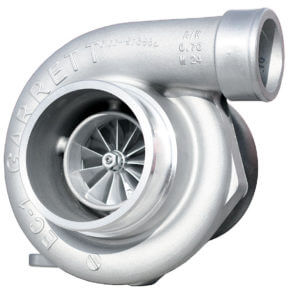
A turbo charger runs hot and can degrade oil faster. If you have a turbo, don’t go beyond the car maker’s oil change recommendations
normally aspirated engine. The turbo can spin at speeds up to 100K RPM and that creates a lot of heat. The bearings in those turbos are cooled by engine coolant and the oil is circulated through an engine oil cooler to remove the excess heat. That high shear, and high heat stresses the oil’s additives, reducing its resistance to thermal breakdown.
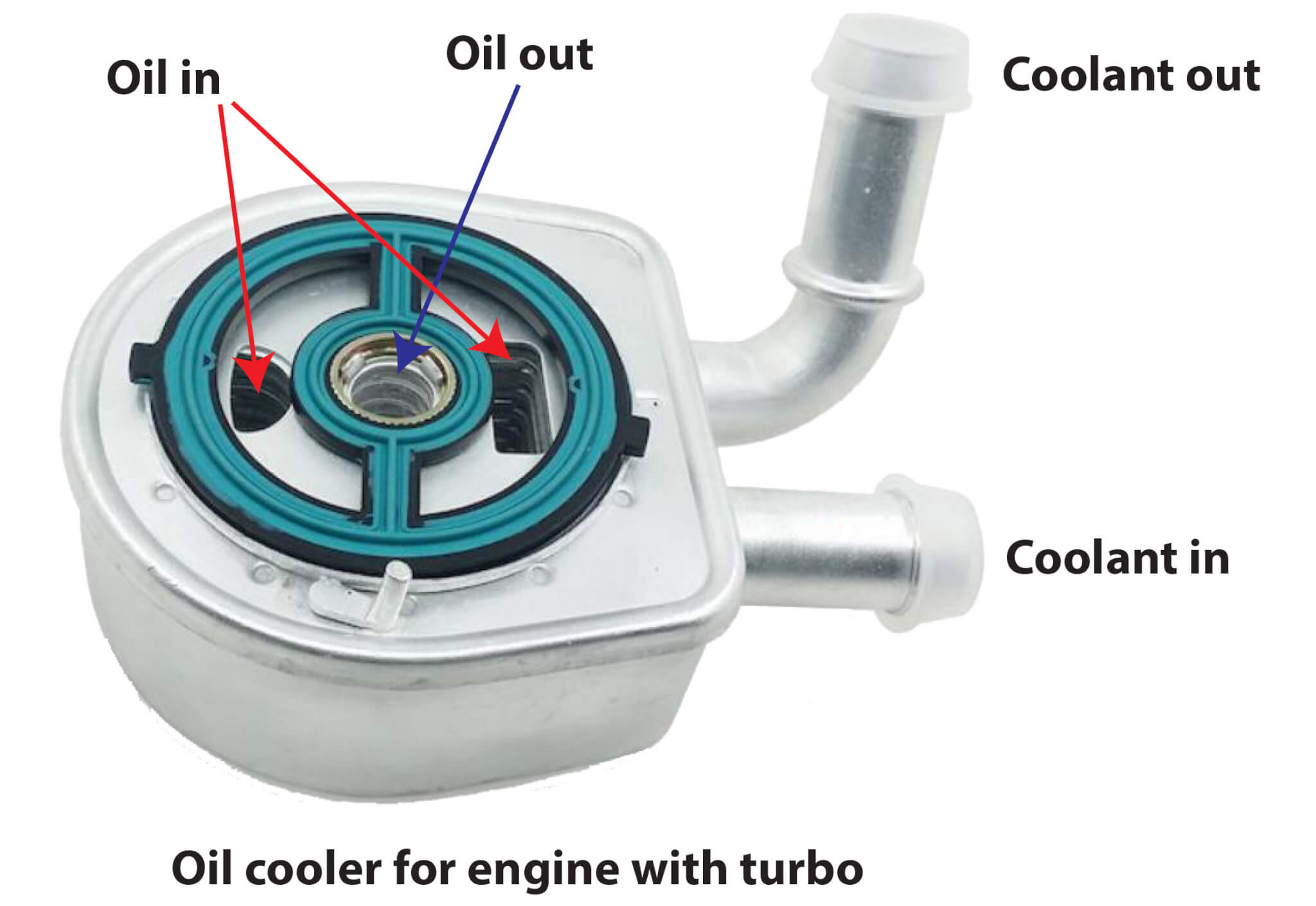
• Engines with gasoline direct injection operate off of VERY high fuel injection fuel pressure. In fact, the high pressure fuel pump often boosts fuel pressure to almost 2,000-psi. The high pressure fuel pump achieves that kind of boost by running off a triangular lobe on the camshaft. If you use the wrong oil, or extend oil changes beyond factory recommendations, you can literally wear off the lobes of the camshaft, resulting in a VERY expensive engine repair job.
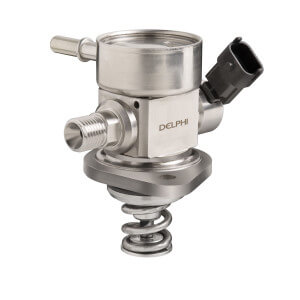
High pressure fuel pump
• Engines with variable valve timing (VVT) have
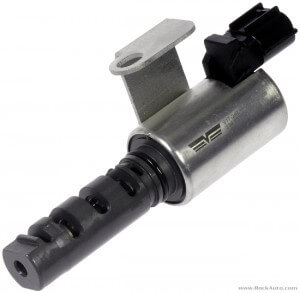
Oil control valve/cam phaser/variable valve timing solenoid
pneumatically controlled actuators that rotate the camshafts to change valve timing. The actuators are operated by “phasers,” “oil control valves,” or more simply, solenoids. The solenoids pulse engine oil pressure to advance or retard the VVT actuators. If you extend oil changes beyond factory recommendations, oil breakdown and sludge can clog the solenoids, causing improper VVT operation. Many VVT actuators also have locking pins that spring into place on engine cool down. The pins lock the VVT actuator to prevent movement at cold engine startup when there’s not enough oil flow to operate the VVT actuators. When you extend oil changes beyond the recommended intervals, you create sludge that binds the locking pins, causing them to break or wear.
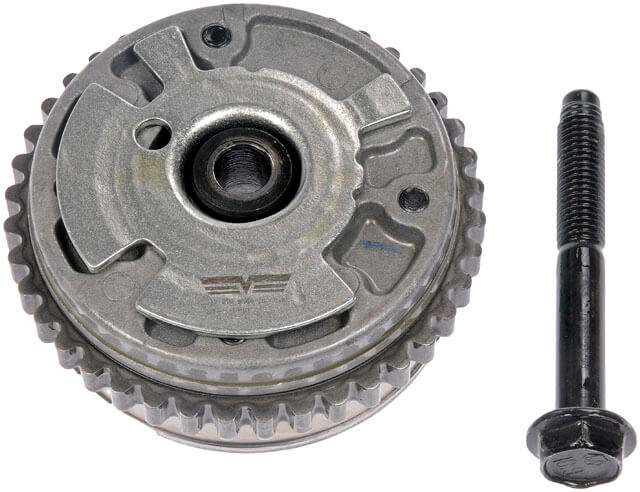
Variable valve actuator
How you drive affects oil life
Most engine wear occurs on cold startup because there’s pressure but low flow.
• Cold starts and short trips load the engine oil with water and raw gas. Cold engines need a rich mixture to start. The crankcase also has some condensation from the previous night’s cooldown. When some of that rich mixture gets into the crankcase due to piston ring blowby, it mixes with the water to form sludge. When you drive the vehicle for long distances, the engine oil heats up enough to evaporate off the excess gas and water. However, the engine oil doesn’t reach a high enough temperature to accomplish that if you drive short trips. So short trips shorten oil life.
• Stop and go traffic can shorten oil life. Engine cooling decreases in stop and go traffic due to the lack of ram air through the radiator. Higher engine temperatures degrade oil faster, causing thermal breakdown.
• Towing, steep hills, fast acceleration cause viscosity modifier breakdown. Viscosity modifiers are long chain polymers that expand or “uncoil” when hot. They help reduce oil thinning as the oil heats up. But they aren’t lubricants. When the engine is under load, the polymers are susceptible to shearing, where the long chains are actually cut. Polymer “shearing” is permanent and each additional round of shearing further reduces the oil’s overall high temperature viscosity. This is referred to as “Permanent Viscosity Loss.” If you tow, routinely climb steep hills or have a lead foot, you’re causing accelerated shear.
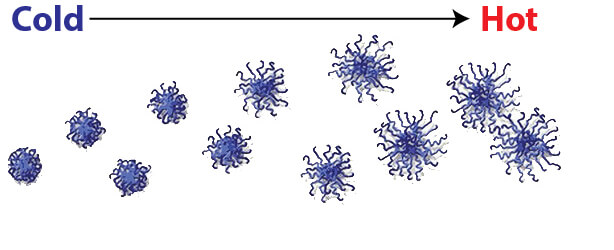
Viscosity improver polymers uncoil/expand as they heat
• Long trips in hot conditions cause thermal breakdown. Engine oil protects metals parts from contacting one another. But oil also has a second job, to remove heat. When you travel long distances in hot conditions; like a long trip on hot asphalt, the engine oil can’t release as much heat. That shortens the life of your oil.
So NO ONE can tell you how long your oil lasts unless they know your engine and driving habits.
Aren’t synthetic oils better?
Yes. Then why can’t you assume you can extend your oil change intervals?
The ONLY way you can justify extending oil change intervals by switching to a synthetic oil is by routinely testing the oil to determine it’s lifespan in your particular engine.
Let’s say your friend uses Mobil 1 in his engine and has the oil tested every 5M miles at an oil analysis lab. After many tests, he’s determined that he can safely extend oil changes to 20,000 miles. Can you extrapolate that to your engine? NOPE.
First, even with the same engine and the same driving habits, oil life changes over time as the engine wears. While Mobil 1 might last 20,000 miles in an engine with 25,000 miles on it, that same engine will operate differently when it has 125,000 miles on it. It will produce more blowby due to wear and that blowby will contaminate the oil faster. The additional wear will cause the anti-wear additives to deplete faster than when the engine had only 25,000 miles on it.
Second, oil life is not always linear. Oil life can deteriorate rapidly as the additives wear out. So a proper oil analysis must be conducted over the entire test period. In other words, You test the oil every 3,000 to 5,000 miles under the lab results start to show a rapid decline. Once you know the tipping point, you can set your oil change intervals so they occur before that level of wear. Even then, must conduct a new oil analysis again in 50,000 miles, since the engine has accumulated wear.
Let’s say your friend has done all that and has discovered through testing that he can change oil every 20,000 miles until his engine reaches 125,000 and then he changes oil every 15,000 miles after that. Can you use his data on your engine? Nope. You have to do your own testing routines to determine oil life on your particular engine driven under YOUR own driving habits.
©, 2018 Rick Muscoplat
Posted on by Rick Muscoplat